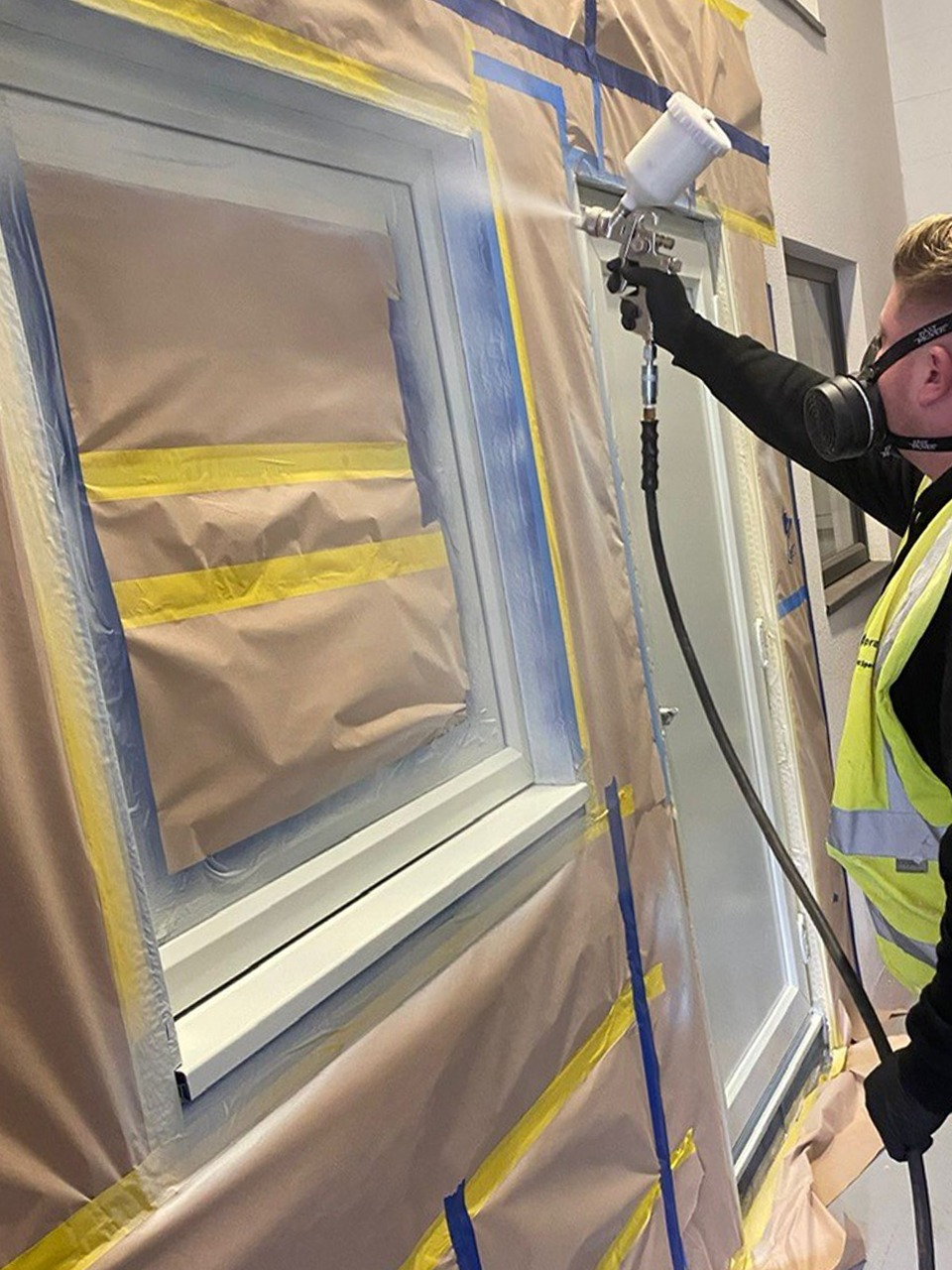2K UPVC Painting
Painting UPVC with 2K paint involves several steps to ensure a durable and high-quality finish. Here’s a breakdown of the process:
Surface Preparation:
Cleaning: Thoroughly clean the UPVC surface to remove any dirt, grease, or contaminants. This can be done using a mild detergent and water, followed by a rinse and dry.
Sanding: Lightly sand the surface to create a rough texture that helps the paint adhere better. Use fine-grit sandpaper for this step.
Priming: Apply a suitable primer designed for UPVC surfaces. This helps the paint bond more effectively.
Mixing the Paint:
2K Paint Components: 2K paint consists of two components: the paint itself and a hardener. These need to be mixed together in the correct ratio as specified by the manufacturer1.
Chemical Reaction: Once mixed, the paint undergoes a chemical reaction that causes it to harden and cure, providing a durable finish.
Application:
Spraying: Use a spray gun to apply the paint evenly. Multiple thin coats are better than one thick coat to avoid runs and drips.
Drying Time: Allow each coat to dry according to the manufacturer’s instructions before applying the next one. 2K paint typically takes longer to dry compared to 1K paint.
Curing:
Final Cure: After the final coat, the paint needs to cure fully. This can take several hours to a few days, depending on the specific product and environmental conditions.
Finishing Touches:
Inspection: Check for any imperfections or areas that need touch-ups.
Polishing: Once fully cured, the surface can be polished to enhance the finish and shine.
Using 2K paint on UPVC provides a more durable and long-lasting finish compared to 1K paint, making it ideal for surfaces that need to withstand wear and tear


Services
Expert repairs for business needs.
Quality
Trust
contact@jbhrepair.co.uk
07936471666
© 2024. All rights reserved. JBH Repair Ltd 16002871
